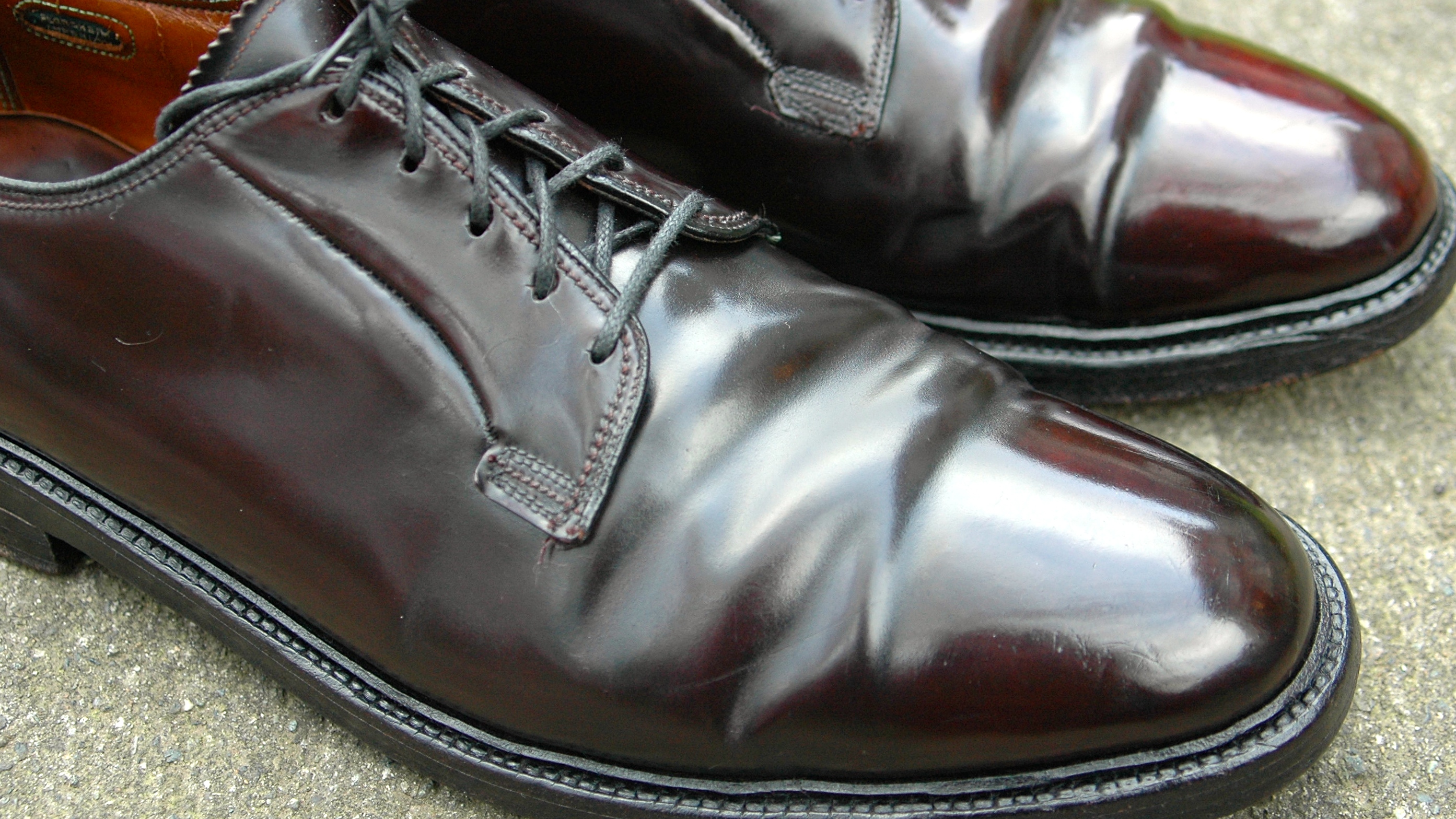


The first stage is a thirty-day stint in the tanning pits with a relatively mild, lightly astringent tanning solution. Pit-tanning for Horween shell cordovan happens in two stages. This pit-tanning process takes about two months, and during this time the butts are lightly agitated as they slowly absorb Horween’s signature blend of tree bark extracts. The magic truly begins when the butts are tacked onto wooden slats and then lowered into pits. To prepare the butts to accept the penetration of the vegetable tannins that will turn the hides into leather, they make a 24-hour-long visit to the pickling paddles, followed by a two-week rest. Next, hair is chemically removed from the hides, and the horse fronts (the hide from the front half of the animal) are separated from the horse butts (the rump area). The hides are given an initial inspection for quality before getting trimmed down to a usable area. When the horsehides arrive at Horween’s tannery in Chicago, they still have a layer of hair and are covered in salt (to act as a preservative to keep the hide from spoiling). Horween sources horsehides from countries such as Canada or France, where horse meat is produced for food and the hides are left over as a byproduct. But what exactly goes on during those six long months? It’s almost cliché for any company marketing a product made with Horween shell cordovan to mention that it takes roughly six months, start to finish, for the leather to be produced. But let’s set those topics aside-today, we’re taking a look at how Horween produces its shell, and what the stuff looks like when it’s been given a proper beating. Shell cordovan stands apart from other leathers for needing a particular approach to care and maintenance, and with how scarce and expensive the stuff can be, there’s certainly an argument to be made about whether it’s in fact somewhat overrated. Today, Horween’s shell is widely regarded as being the world’s best, not only for its overall appearance, but also for its resistance to water spotting and its firm-but-forgiving temper. Horween soon found a market for their shell in the footwear industry when they began to supply it to fellow Chicago company Florsheim Shoes in the early 1910s.

Originally, their shell was marketed as strops for honing straight razors, but with the advent of the disposable safety razor, demand for shell cordovan strops soon diminished. has produced its legitimately world-famous shell cordovan leather from the time they began operating in 1905. Made from the subcutaneous membrane located in the rump area of a horse’s hide, shell cordovan is a leather renowned for its tight grain structure (which rolls instead of creasing), durability combined with an impossibly smooth hand, and ability to take on a tremendous shine.Ĭhicago’s Horween Leather Co. This time around, we’re starting things off with a look at one of-if not the-most iconic leathers ever: Horween Shell Cordovan. With our second Stitchdown Patina Thunderdome in the rearview mirror and the third-annual shoe-and-boot contest on the horizon, we’re picking back up with our How Leathers Age series.


 0 kommentar(er)
0 kommentar(er)
